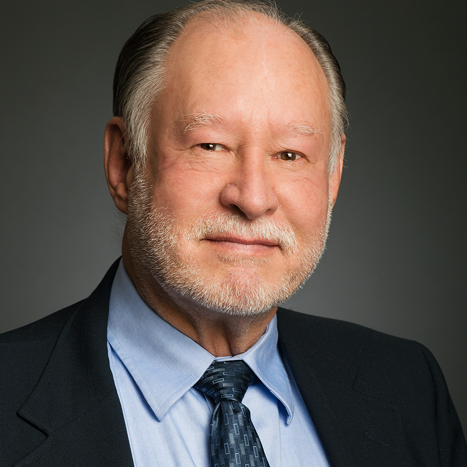Perspective: Health Sector Spending Partially Rebounds in May but Outlook Remains Deeply Uncertain
June 26, 2020
Paul Hughes-Cromwick
George Miller
Corwin (Corey) Rhyan
Data released this morning on May Personal Income and Outlays, from the US Bureau of Economic Analysis, show a rebound in health spending in total and across all categories except for nursing home care. We use our Health Sector Economic Indicators framework to provide an update on health spending and selected components, and discuss what may lie ahead given the late June resurgence of Covid-19 in the US.
May Data
Preliminary data indicate that personal health care spending in May 2020 was 16.5% lower than in May 2019 (Exhibit 1). Since the national health expenditure accounts began in 1965, we don’t believe there has ever been negative annual growth in personal health care, yet we now see 3 consecutive months of this behavior. The pattern of stable growth followed by 3 months of annual declines holds for each of the main spending categories except for prescription drugs, which saw a spike of 14% growth in March (likely representing stocking up in fear of quarantining and shut downs), with annual growth moderating to 5% in April and May. Exhibit 2 shows annual spending growth for personal health care and 6 components, comparing May 2019 and May 2020.
Nonetheless, the main story in May is rebounding spending, as shown in Exhibit 3. Personal health care is up 17.7% from April though still down 19.8% from February (the all-time high level). Hospital care rose 29.5% from April but is down 27.1% from February. Interestingly, nursing home care fell 7.2% from April and is down 12.7% from February. Nothing exemplifies gyrating health care spending like dental care, which rose 43.2% from April to May but is still down 44.1% from May 2019 (see this AP piece, “Open wide: US dentists quickly rebuild after virus shutdown”).
Exhibit 1: Year-Over-Year Growth Rates in Personal Health Care
Exhibit 2: Health Spending 12-Month Growth for Major Categories
Exhibit 3: Comparison of April 2020 to May 2020 Annual Growth in Spending by Major Category
With this spending rebound, it is not surprising that health care added 312,000 jobs in May, regaining 20% of the 1.57 million jobs lost in March and April, as we reported in our June 5 blog.
Using estimates of gross domestic product (GDP) provided by Macroeconomic Advisers, the health spending share of GDP has sharply bounced back to 17.3% in May from 15.8% in April, and a mostly steady reading, prior to Covid, near 18% over the past four years. This shows that health care spending is now rising more quickly than the overall economy.
Unsettled and Unsettling Future
We learned yesterday that Gross Domestic Product fell 5% in the first quarter of 2020. Forecasts for second quarter, which ends next Tuesday, are exhibiting an extremely wide range; e.g., the New York Federal Reserve Bank is predicting a decline of 16.3%, while colleagues to the south at the Atlanta Federal Reserve Bank are predicting a decline of an unprecedented 39.5%. Until the past couple of weeks, we could take solace that the worst had passed, the economy was recovering, and that even data for the second quarter, which will not be released until the end of July, would be looking in the rearview mirror. Similarly, health care utilization was recovering to earlier levels with hope that new efficiencies would be promoted, new technologies like telehealth services might be robustly adopted, and less low-value care might be provided.
But fluid doesn’t begin to describe our current situation. Covid-19 cases surpassed 40,000 yesterday (Exhibit below from the New York Times) and fully 30 states/territories showed increasing 14-day average cases.
Today, Texas and Florida announced the closing of bars, indicative of many reluctant “re-opening rollbacks.” Officials at every level of government are warning of a coronavirus resurgence. Florida and Arizona set daily records of growing cases.
Thus, we now seem to be on the cusp of a return to the temporary suspension of elective care, as already seen by the steps taken in many major Texas metro areas. While future data will continue to be confounded by additional acute care for Covid-19 patients weighed against suppressed elective care, we suspect that a resurgence of new cases will exhibit a net downward pressure on health care spending into the fall. Moreover, new research from KaufmanHall’s National Hospital Flash Report shows that some of the recovery in health care spending, especially for hospitals, has been a result of temporary government support via the CARES Act, and although additional federal support has been proposed, and is likely needed, it has not progressed through Congress.
Of course, these utilization and financial metrics pale in comparison to the terrible human consequences of a pandemic that we collectively are apparently unable to control.
As a final note, yesterday, PwC release their widely followed, annual report, Medical cost trend: Behind the numbers 2021. Reflecting the unsettled environment, they predict a wide cost trend range from 4% to 10%.
We will, of course, continue to closely monitor the spending, employment, price and utilization data. Looking ahead, we will report on the new employment data to be released on Friday, July 3.
Altarum’s health sector tracking work is made possible by a grant from the Robert Wood Johnson Foundation.
Altarum is a nonprofit organization that works with federal and state agencies and foundations to design and implement solutions to improve the health of individuals with fewer financial resources and populations disenfranchised by the health care system. We achieve measurable results by combining our expertise in public health and health care delivery with technology, workforce training and continuing education, applied research, and technical assistance. Our innovative solutions lead to better health for beneficiaries and better value for payers.

Perspective

Paul Hughes-Cromwick - MA
Co-Director of Sustainable Health Spending Strategies
Areas of Expertise- Health Sector Spending
- Health Policy Analysis
For over 35 years, Paul Hughes-Cromwick has been involved in health care economic and policy analyses including economic forecasting and health sector economic indicators. Paul leads Altarum’s monthly series of timely briefs covering national health spending, employment, prices and health care utilization. Paul has a bachelor’s degree from the University of Notre Dame and a master’s degree from Clark University.

George Miller - PhD, BSE, MSE
Fellow and Research Team Leader
Areas of Expertise- Value of Health
- Low-Value Care
- Health Economics
Dr. George Miller is a fellow participating in Altarum's efforts to track national spending, analyze the drivers of spending growth, and quantify a sustainable spending growth rate. Dr. Miller received his BSE, MSE, and PhD degrees in industrial and operations engineering from the University of Michigan, where he subsequently served as an adjunct assistant professor.

Corwin (Corey) Rhyan - MPP
Research Director, Health Economics and Policy
Areas of Expertise- Health Economics
- Health Policy Analysis
- Economic Modeling
Corey develops tools that model the societal benefits of improved population health and conducts economic analyses of health sector policies. He holds a master’s degree in public policy from the University of Michigan and a bachelor’s degree in economics from Washington University in St. Louis.